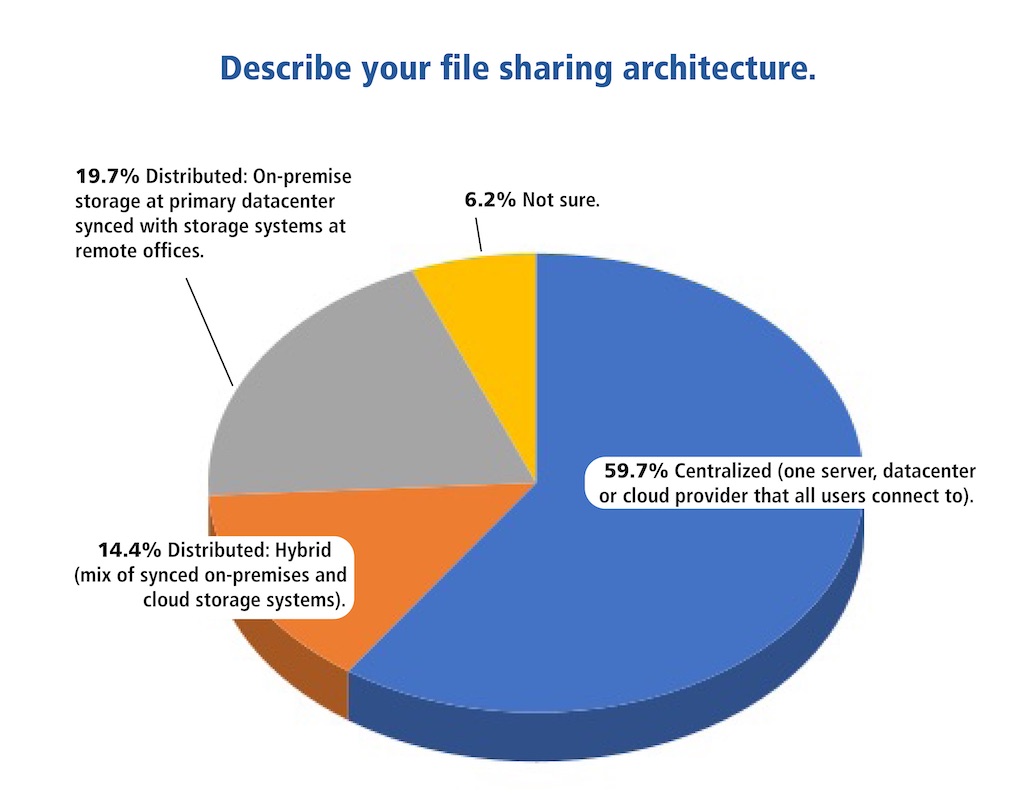It’s no secret that CAD tools/users have become more reliant on IT technology lately. We store files in cloud locations, validate CAD licenses via the Internet, swap redlines and markups via WAN connections, and confab with our remote teammates using video conferencing tools. Truly, to get CAD done these days you have to go through the tools that IT manages. And as these changes have taken root, CAD managers are ever more at the mercy of the IT teams that manage those resources.
More and more I’ve started asking the following questions: “How much should I be involved with IT?” and “Should CAD managers be treated as part of the IT department?” or even “Should CAD managers report to the IT department?” In this edition of the CAD Manager’s Newsletter, I’ll pass along some strategies you can use to decide how involved with IT you should be at your company. Here goes.

Image source: Alina/stock.adobe.com.
CAD Manager Personas
A consistent trend over the years is that CAD managers are typically designers, engineers, architects, or other technical workers who evolve into the CAD manager role. It is rare for someone with a pure IT background to become a CAD manager. So, the persona that emerges is that of someone who isn’t a classic “computer nerd” but someone who evolved into the position because of their CAD expertise.
Therefore, most CAD managers I talk to still report through the engineering manager, production manager, architectural director, or other technical management branch of the company — it is rare that they report through the IT department. As a result of not being in the IT department, many CAD managers have zero IT capability or permissions.
What I have noticed is that today’s CAD manager either has to be more IT conversant or has to rely a lot more on the IT department than they did before. Could it be that CAD managers should now be part of the IT department or at least have all the power and permissions of an IT staff member? Could being a member of the IT staff better help us make IT reliant CAD tools run better? How can the CAD manager know the answer to these questions?
Ask: What IT Tools Determine Your Success?
Or, put another way, what IT tools/issues cause you problems? After all, if you know where the IT heartburn is you know what IT areas you need to pay more attention to. To answer the above, read through the following topics and answer each diagnostic question Yes, No, or Sometimes and write down your answers:
Network administration: Creating user accounts, creating user groups, assigning network permissions to users and groups, sharing and configuring network peripherals, access to cloud accounts, etc. If your IT department handles all these tasks, how well do they do so?
Diagnostic question #1: Do your CAD tools often experience problems because of incorrect network permissions, peripheral issues, or account configuration problems?
Peripheral management: The ability to reset printers/plotters, clear out document queues, configure device defaults, deploy drivers, etc., is something every CAD manager should know how to do.
Diagnostic question #2: Do you often find yourself waiting for IT intervention to get a printer or plotter back up and running or have to wait for driver updates?
Data archiving and backup: The ability to store, find, and recover data is key for disaster avoidance and recovery. The ability to comb through old projects to find hidden nuggets of information from similar projects executed years ago can also save tons of time. Learning to use your company’s backup and restore IT procedures could prove to be invaluable.
Diagnostic question #3: Do you find yourself waiting long periods of time to recover or find archived information due to IT delays?
Software updates: To the extent that CAD software requires administrative permission to be updated, the CAD manager should have the authority and knowledge to manage the process. This includes the ability to create software deployments and deliver automatic updates via user login and group membership. CAD managers who don’t have IT authority to do this are at a disadvantage during upgrades and service pack installations.
Diagnostic question #4: Do you experience problems getting software installed and upgrades/service packs deployed due to lack of IT authority?
Wide area network (WAN) management: As companies use CAD tools across WAN connections to branch offices the CAD manager will be called upon to resolve problems at these remote locations. CAD managers need access to remote network servers and permissions to perform all manner of functions on any servers where CAD work is performed.
Diagnostic question #5: Do you have problems managing software tools and configurations at remote sites due to lack of IT authority?
Support bureaucracy: As companies have become more security-focused, the tendency has been to make IT more tightly locked down and to hide behind support ticketing systems rather than simply being able to call a specific person for help. While general users may be able to wait for help on an ordinary issue, CAD managers are responsible for many users and usually need to get resolutions in place quickly.
Diagnostic question #6: Do you have to wait long periods of time for impersonal IT service to resolve issues in your CAD environment?
Keeping Score
For every time you answered YES to a diagnostic question above, score 2 points. For every SOMETIMES answer, score 1 point. For every NO answer, score 0 points. Your total score will be somewhere between 0 and 12 points which allows me to draw some conclusions about your situation.
0–3 points: This company has a well managed IT department that gives you the authority to do what you need to do. You rarely have to wait on IT to assist with CAD issues and when you do they are typically handled promptly and correctly. It is safe to assume that IT issues are not hampering your CAD tools at this company.
4–7 points: This company has an IT department that probably doesn’t understand the CAD tools you manage and therefore doesn’t understand the resources/permissions you need to make them work right. You waste varying amounts of time wrestling with IT issues which causes enough user frustration and project delays to be noticeable.
8–12 points: This company has a disconnected “glass tower” IT department that causes problems for CAD users and managers alike on a frequent basis. Projects are often delayed and users resort to “working around the system” to avoid IT related issues, rather than put up with endless waits for support tickets. In this environment, standards are undermined, anarchy rules, and the CAD manager is helpless.
Recommendations
Based on your responses, I’ll let you draw your own conclusions about which category above you fit into. I’ll now make some recommendations for how CAD managers can get more involved with (or be employed by) IT to make things work better.
0–3 points: In this case, the current situation works well so there is no reason to make major changes. The action items for most CAD managers in these types of companies are to communicate all needs with IT professionally, learn as much about IT as you can as you go along to build skills, and to build an even better relationship with the IT staff as you do so. No need to panic in this company.
Note: If you work in one of these companies, rejoice because many CAD managers have it way worse!
4–7 points: In this case, the CAD manager needs to instruct the IT department on exactly what the problems are and the IT department needs to enable them with permissions and tools required to get things running right. While not a train wreck, the problems here are real and won’t get better by ignoring them. While you don’t need to panic in this company, you need to make things right lest they become worse.
Conclusion: Fight to be added to the IT group as a partial administrator and then go about cleaning up the CAD environment so things run correctly. Let IT know you’re working with them, but be insistent that some things need to be fixed.
8–12 points: In this case, the CAD manager needs to be added to the IT staff as an administrator and a full-scale review of IT policy regarding CAD needs to be convened. Senior management needs to understand that users are circumventing the system because the system doesn’t work for them and that project work is suffering as a result. Panic is warranted in this company!
Conclusion: Blowing the whistle on failed IT policy takes patience and professionalism to accomplish. Chances are you will ruffle feathers as you make your case, so always remember to focus on the business needs of the company and the efficiency of your users rather than venting personal frustrations. Do not back down.
So, Who Reports to Who?
As a CAD manager, the only thing I really care about is making my CAD tools run right. That is to say I don’t care who my boss is — but if my boss can help me make things work then that’s great!
- Therefore, I’ve adopted the following recommendations:
- If being in the IT department is the only way to make sure the CAD tools work, then IT is where I should be.
- If being a “deputy IT administrator” allows me to get CAD tools working, then I’ll undertake the training required to make that happen, realizing that it only makes me a more effective and marketable CAD manager. Note: This approach may make me a part time IT employee!
- If everything works great already, I’ll still go out of my way to learn from and help my IT department so things can get even better, but I’ll stay out of the IT organization.
The funny thing is that even though CAD tools are much more IT-dependent today than they were even five years ago, the above rules have worked well for me ever since the wide adoption of office networks in the late 1980’s.
Summing Up
I know that CAD management is a demanding job and it seems like adding IT issues makes the job worse, but what choice do we have? These days, CAD doesn’t work well unless IT works well, so I now strive to be just as involved with IT as I need to be. I’ve found that having IT authority lowers my stress and that of my users as well.
I highly encourage you to think about your level of IT authority and how IT issues impact your CAD environment using the diagnostic questions I’ve provided. Until next time.
Robert Green
Robert Green performs CAD programming, standardization, and consulting services globally. He is the author of Expert CAD Management: The Complete Guide. Reach him via his website (greenconsulting.com/).
View All Articles





Share This Post